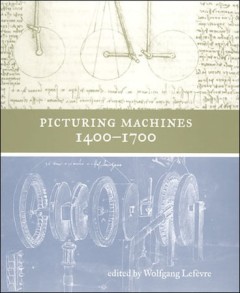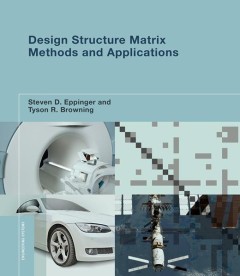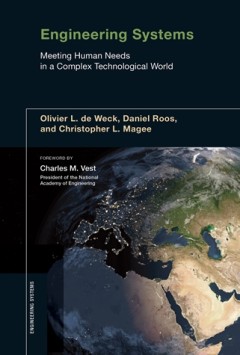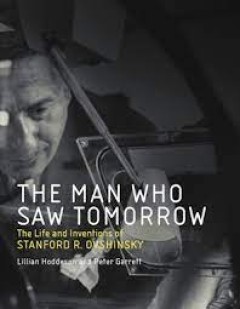Filter by

Metadyne statics
"The theory, design, and applications of a class of electrical machines, the metadyne, written by the man who first defined these devices and recognized their potentialities."
- Edition
- -
- ISBN/ISSN
- 9780262310857
- Collation
- -
- Series Title
- -
- Call Number
- -

A social history of engineering (Second Edition)
How social and economic conditions have precipitated advances in engineering. A Social History of Engineering shows how social and economic conditions in each age have precipitated advances in engineering. There are, in short, economic, political, and philosophical implications in changing technologies. While the book begins with the Stone Age, the Greeks, and the Romans, the bulk of the vol…
- Edition
- Second edition.
- ISBN/ISSN
- 9780262310932
- Collation
- 1 online resource (410 pages).
- Series Title
- -
- Call Number
- -

Picturing machines 1400-1700
How technical drawings shaped early engineering practice.Technical drawings by the architects and engineers of the Renaissance made use of a range of new methods of graphic representation. These drawings--among them Leonardo da Vinci's famous drawings of mechanical devices--have long been studied for their aesthetic qualities and technological ingenuity, but their significance for the architect…
- Edition
- -
- ISBN/ISSN
- 9780262278102
- Collation
- 1 online resource (vi, 347 pages) :illustrations.
- Series Title
- -
- Call Number
- -
Portraits in silicon
Short biographies of: Charles Babbage, Alan Turing, John von Neumann, Claude Shannon, Konrad Zuse, John V. Atanasoff, John V. Mauchly, J. Presper Eckert, Howard Aiken, Jay W. Forrester, Thomas J. Watson, Sr., William Norris, H. Ross Perot, William Shockley, Robert Noyce, Jack Kilby, Marcian E. (Ted) Hoff, Gene Amdahl, Seymour Cray, Gordon Bell, Grace Murray Hopper, John Backus, John Kemeny, Tho…
- Edition
- -
- ISBN/ISSN
- 9780262291422
- Collation
- 1 online resource (xiv, 374 pages) :illustrations, portraits
- Series Title
- -
- Call Number
- -

Design Structure Matrix Methods and Applications
An introduction to a powerful and flexible network modeling tool for developing and understanding complex systems, with many examples from a range of industries.OCLC-licensed vendor bibliographic record.
- Edition
- -
- ISBN/ISSN
- 9780262301428
- Collation
- 1 online resource (xii, 334 pages) :color illustrations.
- Series Title
- -
- Call Number
- -

From X-rays to DNA: How Engineering Drives Biology
An argument that technology accelerates biological discovery, with case studies ranging from chromosome discovery with early microscopes to how DNA replicates using radioisotope labels. Engineering has been an essential collaborator in biological research and breakthroughs in biology are often enabled by technological advances. Decoding the double helix structure of DNA, for example, only be…
- Edition
- -
- ISBN/ISSN
- 9780262318389
- Collation
- -
- Series Title
- -
- Call Number
- -

Producing power :the pre-Chernobyl history of the Soviet nuclear industry
An examination of how the technical choices, social hierarchies, economic structures, and political dynamics shaped the Soviet nuclear industry leading up to Chernobyl.OCLC-licensed vendor bibliographic record.
- Edition
- -
- ISBN/ISSN
- 9780262321792
- Collation
- 1 online resource (xxxi, 362 pages) :illustrations.
- Series Title
- -
- Call Number
- -

Engineering Systems: Meeting Human Needs in a Complex Technological World
Engineering, for much of the twentieth century, was mainly about artifacts and inventions. Now, it's increasingly about complex systems. As the airplane taxis to the gate, you access the Internet and check email with your PDA, linking the communication and transportation systems. At home, you recharge your plug-in hybrid vehicle, linking transportation to the electricity grid. Today's large-sca…
- Edition
- -
- ISBN/ISSN
- 9781613445891
- Collation
- 1 online resource (xvi, 213 pages) :illustrations, maps.
- Series Title
- -
- Call Number
- -

The man who saw tomorrow :the life and inventions of Stanford R. Ovshinsky
The first full-length biography of a brilliant, self-taught inventor whose innovations in information and energy technology continue to shape our world.OCLC-licensed vendor bibliographic record.
- Edition
- -
- ISBN/ISSN
- 9780262345033
- Collation
- 1 online resource
- Series Title
- -
- Call Number
- -

Kesehatan Seluler
Sasan Adibi (BS’95, MS’99, MS’05, PhD’10, SMIEEE’11) has a PhD degree in Communication and Information Systems from University of Waterloo, Canada and the recipient of the best PhD thesis award from the IEEE Society. He is currently involved in the research, design, implementation, and application Electronic Health (eHealth) and Mobile Health (mHealth). Sasan’s research publication …
- Edition
- 1
- ISBN/ISSN
- 978-3-319-12816-0
- Collation
- XI, 1172
- Series Title
- Springer Series in Bio-/Neuroinformatics
- Call Number
- -
 Computer Science, Information & General Works
Computer Science, Information & General Works  Philosophy & Psychology
Philosophy & Psychology  Religion
Religion  Social Sciences
Social Sciences  Language
Language  Pure Science
Pure Science  Applied Sciences
Applied Sciences  Art & Recreation
Art & Recreation  Literature
Literature  History & Geography
History & Geography